By Dr Ken Neill III
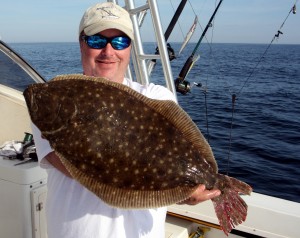
Flounder are one of the most sought after fish in our waters. They are great to eat and are fun to catch. Lately, there has been a surge in the number and in the size of flounder. In Virginia, it is primarily an April through November fishery though some are caught in March and December.
Early season action is found in the seaside inlets of Virginia’s Eastern Shore. Wachapreague has a world class fishery that is at its peak April through June. Summer and Fall are the times to fish the lower Chesapeake Bay. Flounder can be found throughout the bay and in the rivers feeding the bay. Certain areas are known for producing numbers of big fish. These include the area near the Cell, 36A off of Cape Charles,the Hump, Back River Reef, the channels at the mouth of the bay, and of course, the Chesapeake Bay Bridge Tunnel. There are also good fisheries that develop at the mouth of Back River and at the mouth of Lynnhaven Inlet.
The key to these areas is deep water. Flounder can be found in skinny water, many are caught by speckled trout fishermen on Poquoson Flats, but most of the bigger fish are caught at least adjacent to deep water.
The most common method of fishing for flounder is drifting bait on the bottom. The rig most often used is the high-low bottom fishing rig. The classic bait is a strip of squid and a minnow placed on each hook. More serious flounder-pounders will usually use different rigs. They consist of a three-way swivel attached to the main line. There is a short line from the swivel to a sinker heavy enough to bounce along the bottom as you are drifting. A longer mono leader, 2-3 feet, goes to the hook. Above the hook will often be added beads, a bucktail skirt, and a spinner blade to aid in attracting fish. A Kahle style hook is the most popular. These rigs can be bought pre-made at your local tackle store or you can make your own.
For big flounder think big bait. Small live spot are great though most any small fish will do. Long strips of cut bait work well. Favorites are shark, bluefish, ray, and flounder belly. Strips of false albacore work well also. A piece of pork rind can be placed on the hook along with the fish strip to make it harder for the flounder to bite through your bait.
When the flounder bites, your line will feel heavy. You can feed out some line to let the fish get the hook in its mouth or you can just drag the fish along. It will work its way up the bait to your hook. How long you wait to set the hook will depend on the size of your bait and the size of the flounder. If you miss the fish, drop back, often they will latch on again. Drifting in deep water is an area where the braided lines shine. You can feel a lot more and you can use less weight to hold bottom.
Trolling is another method of catching flounder. This method is used extensively around the Chesapeake Bay Bridge Tunnel, though it will work wherever there are flounder. Around the CBBT, wire is the line of choice. It is attached to a three-way swivel. A 3-4 foot mono dropper goes to a large sinker and a 10-15 foot mono leader goes to a bucktail, 1/4-1/2 ounce. A piece of pork rind and a strip of fish or squid is placed on the hook. Troll slowly, working the rod to keep contact with the bottom.
A less often used way to catch flounder is to chum from an anchored boat. Place a weighted chum pot down near the bottom, filled with ground menhaden, and place your baits just down current from it. Many flounder are caught this way by cobia fishermen each year.
To Catch A Doormat
An all-time record of 78 summer flounder weighing ten pounds or more were registered for trophy fish citations in Virginia last year. I spoke with the director of the Virginia Saltwater Fishing Tournament, Claude Bain, III and asked him what was going on. Why are so many big flounder being caught? He said that there were a couple of factors. One is that the management plan is working. Spawning biomass has nearly tripled since 1991 which means there are more big flounder out there to be caught. Another factor is that more anglers are learning to fish the structure where large flounder are concentrated. We are not talking about drifting along some channel edge type of structure. We are talking about the kind of structure where, unless you are losing some tackle, you are not doing it right type of structure.
Tried and True
The classic way Virginia anglers have caught flounder in structure has been by trolling with wire-line tackle. While most flounder fisherman are drifting around, wire-line trollers have caught the largest flounder for years. This technique can be used to fish any structure. The Cell and the Cape Henry Wreck are two good locations to catch doormats while using this technique. The structure which seems to have been created for this method of fishing is the Chesapeake Bay Bridge Tunnel (CBBT). Dr. Bob Allen has been wire-line trolling for decades. When fishing for flounder, his terminal tackle consists of a 3-way swivel with a 3-foot dropper to a sinker heavy enough to stay on the bottom. He likes to use a long, 25-foot, leader to his bucktail jig. A long strip bait is placed on the jig. Any fish can be used to make the strip bait, bluefish and flounder are both good. The entire span of the CBBT can be productive. The high rise area, in particular, produces large fish each year.
Wire-line trolling is a lot of work. It takes good boat handling skills by the captain and a deft touch by the angler. If your bait is not on the bottom, you will not catch fish. If you just drag your sinker in the structure, you will be hung up all of the time. The angler must maintain contact with the bottom without getting hung up too much. It takes a lot of effort. You must “feather” the bottom, constantly letting out and reeling in line as the depth changes. The captain must maintain proper boat relationship with the structure. It was a common sight for years at the CBBT to see Dr. Allen in the fly bridge of his sportfisherman, driving the boat and working his wire-line rod at the same time. I have never seen anybody else able to do that. Many of the best wire-line fishermen are no longer with us and those that are…well, they are old. I’m going to hear it for that one. Many beginners who try this technique find it to be too much work and very frustrating and they soon give up on it. This is becoming a lost art but if you are in a flounder tournament and see an old salt with wire-line tackle, don’t bet against him. Better yet, see if he will take you fishing. Once mastered, this technique is deadly.
New and Improved?
A few years ago, a group of anglers from Poquoson, Virginia started bringing in some very impressive catches of flounder. There were trips where all of the fish brought back to the dock were large enough for citations. These guys started to dominate the local flounder tournaments so of course, we wanted to know what in the world they were doing. We watched them while they were catching some of these fish and eventually were able to convince a few of them, like Craig Freeman, to teach us what they were doing. Instead of drifting or trolling for flounder, these fish were being caught while anchored. This will work on any structure but it started out at Back River Reef. The basic technique is to anchor to the structure with a wreck anchor and fish with live bait, usually spot or mullet. Like with wire-line trolling, a 3-way swivel is used. The drop to the sinker is about a foot long with a 2-3 foot leader to a Kahle style hook. You cast your bait up-current and allow the current to walk the bait back along the structure and put the rod in the rod holder and cast out another rod. This technique works best when there is some current but not too much. Use as light a sinker as you can get away with and stay on the bottom.
About this same time, a similar technique was being used to catch big flounder in structure and it was perfected by Capt. Craig Paige. Craig has been a victim of his own success. He is an expert at catching most of Virginia’s fish but he is so well known for his catches of monster flounder, that he stays booked all of the time for flounder trips and does not get to spend much time fishing for his other favorites. Craig also uses live bait to fish structure but he does not do it while anchored. He will use his boat’s engine to hold the boat in the area he wants to fish and fishes his lines straight up and down. This technique also will work on any of the structures out there. Some good spots along the CBBT for this are at either ends of the 3rd and 4th islands and at the pilings of the first pull-off north of the 4th island. He uses a 3-way swivel, a 10-inch drop to his sinker, and a 36-inch leader to a Kahle style hook. His favorite baits are spot, croaker, and mullet in the 3-6 inch range. Capt. Paige’s charters account for a significant percentage of the flounder caught weighing in at over 10 pounds.
Any of the reefs, wrecks and bridges can hold big flounder. Some of the best are the Cell, Back River Reef, the Chesapeake Bay Bridge Tunnel, and the Cape Henry Wreck. During the fall months, structures in the ocean waters are loaded with big flounder. These areas include the Tower Reef, the Triangle Reef, and the Brass Spike. Detailed information about Virginia’s reefs can be found at: www.mrc.virginia.gov/vsrfdf/reef.shtm .
The Cape Henry Wreck is located at: 36 57.660 N, 076 00.628 W
The Brass Spike is located at: 36 55.818 N, 075 33.910 W
Virginia’s record flounder is a 17 pound, 8 ounce fish caught by Charles Cross in 1971. For years, this seemed like an untouchable record. Now, it seems to be just a matter of time before this record is broken and when it is, it will likely be a fish pulled from one of the many structures which are home to some truly huge flounder.

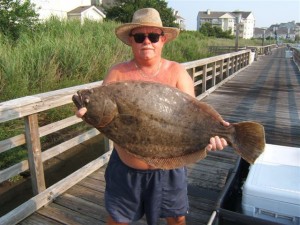
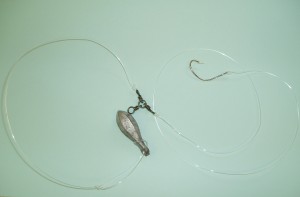

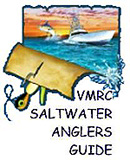
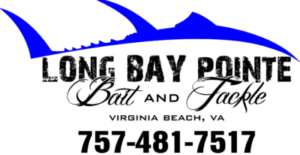

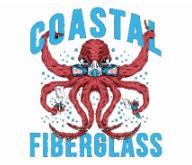





 Views Last 7 days : 2118
Views Last 7 days : 2118 Views Last 30 days : 12700
Views Last 30 days : 12700